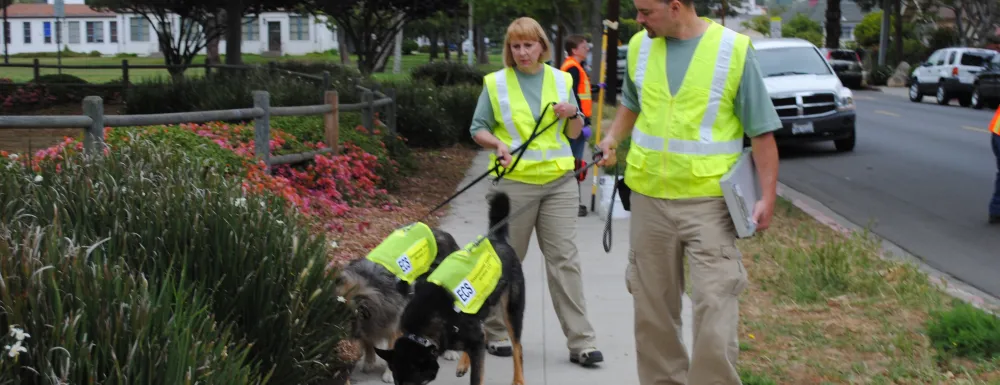
Sewage Sniffing Dogs
In 2010 the Creeks Division received grant funding from the Water Environment Research Foundation for the Canine and Microbial Source Tracking Project. The Canine and Microbial Source Tracking Project built on efforts to identify and locate sources of human fecal contamination (human waste) in storm drains that flow into creeks and beaches in Santa Barbara. Previous efforts by the Creeks Division, using DNA-based techniques, have shown that some of the storm drains within the City are contaminated with human waste. Finding the precise location(s) where waste enters the storm drain network has been challenging, due in part to a relatively high cost per sample and three-week turnaround time for results.
The Creeks Division partnered with Environmental Canine Services, LLC and the University of California, Santa Barbara (UCSB) to test the use of canine scent tracking (sewage sniffing dogs) for locating sources of human-waste contamination in storm drains. Unlike DNA testing, canine scent tracking for stormwater pollution has a relatively low cost per sample and real-time results.
The project included testing of scent tracking results against known locations with contamination (based on the Laguna Watershed Study conducted in 2008 by the Creeks Division). The dogs' results were corroborated with concurrent DNA-based testing performed by the laboratory of Dr. Patricia Holden of UCSB, with whom the Creeks Division has collaborated successfully for many years. Chemical testing was carried out by the Creeks Division and El Estero Water Resource Center Laboratory. The project also tested the use of canines to detect physical locations of human waste entering storm drains, in areas that are known to be problematic based on previous results. The Creeks Division also hosted a community forum where the public was able to learn more about sewage sniffing dogs and their potential to locate sources of contamination in storm drains, and to meet Sable and Logan, the working dogs.
